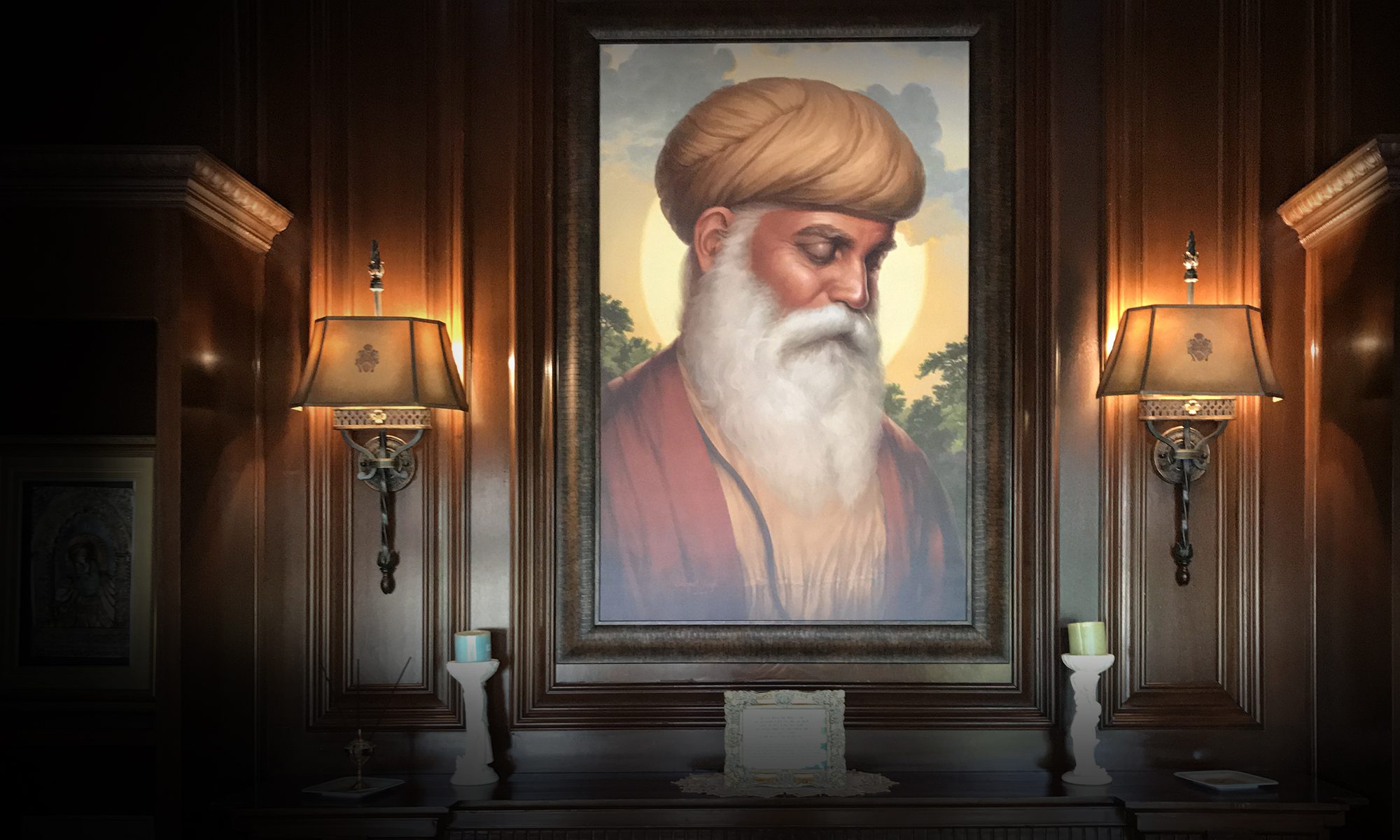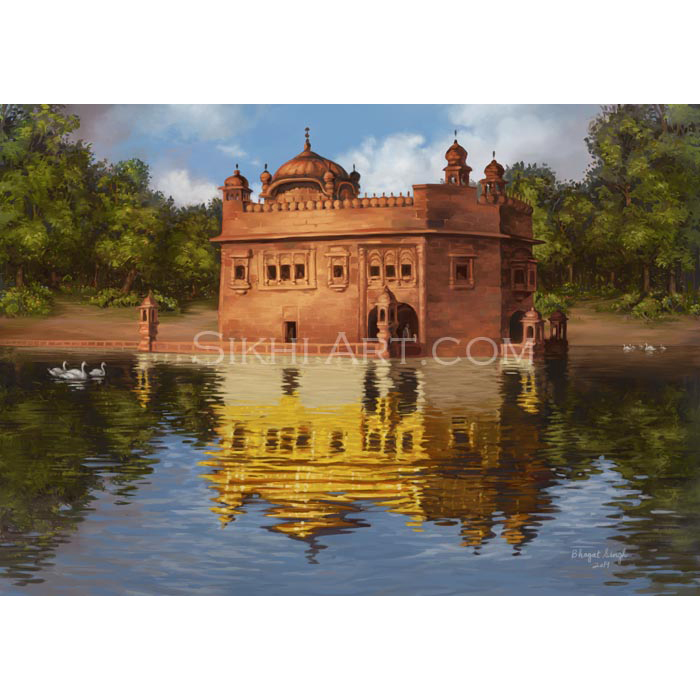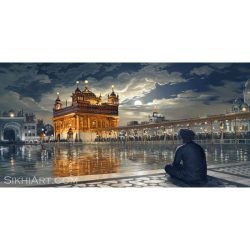Artist's Notes
“Those swans who are filled with love and affection are pure. They transcend their inner ego and dwell in the pool of Hari.”
– Guru Amar Das ji (Guru Granth Sahib, 128)
In this painting of the Golden Temple or Harmandir Sahib, I imagine what Shri Harimandir Sahib might have looked like before it was covered in gold and marble. Its humble origins are of mud and brick, surrounded only by a sacred pool (Amritsar), trees and wildlife as it has yet to develop into a large urban community.
In the sacred pool, the beautiful swans are the spiritually exalted gursikhs that swim in and drink from that abundant supply of amrit, which comes from the meditation of guru’s name.
In this painting you can see the old parikarma path, outside the temple. Notice how the parikarma path goes around the temple, then into a large door. It then comes out of a similar door on the other side and goes around to the front. This parikarma is no longer around and I did my best to preserve the original design in this painting.
History of the Golden Temple
Harimandir Sahib was built in 1604 by Guru Arjun Dev ji. Trageically this version of the building was destroyed by Afghani invaders. The Guru’s temple probably resembled other North Indian temples of the time that did not involve elements of Mughal Architecture. (Mughal architecture was not a trend at this time.)
In 1700s, Baba Deep Singh ji amassed an army to to defend the Golden Temple from the incoming horde. However, him and his men were martyred by the huge force that seeked to destroy the temple. Even though Baba ji tried his best, the creation of the Guru could not be preserved.
After being demolished by Afghans, it was built again by Jassa Singh Ahluwalia in 1764, one hundred years later. This style of the Golden Temple and other famous Indian temples, of this time, were influenced by Mughal architecture. This closely resembles the present-day Golden Temple gurudwara, and became the blueprint for other gurudwaras.
Then in the 1800s, Maharaja Ranjit Singh beautified the temple with gold and marble, etched with beautiful patterns. He made it into a work of art that we see today.
In the 1900s-2000s, the temple was seeing many tourists and pilgrims from all over the world. So the parikarma path was modified and parts of it were destroyed. By demolishing certain walls, the platforms that would otherwise lead into the temple were made into a continuous path around the entire complex.











Ravinder Basra –
We have received the painting, looks awesome! Thanks again!
Rachel Nalwa –